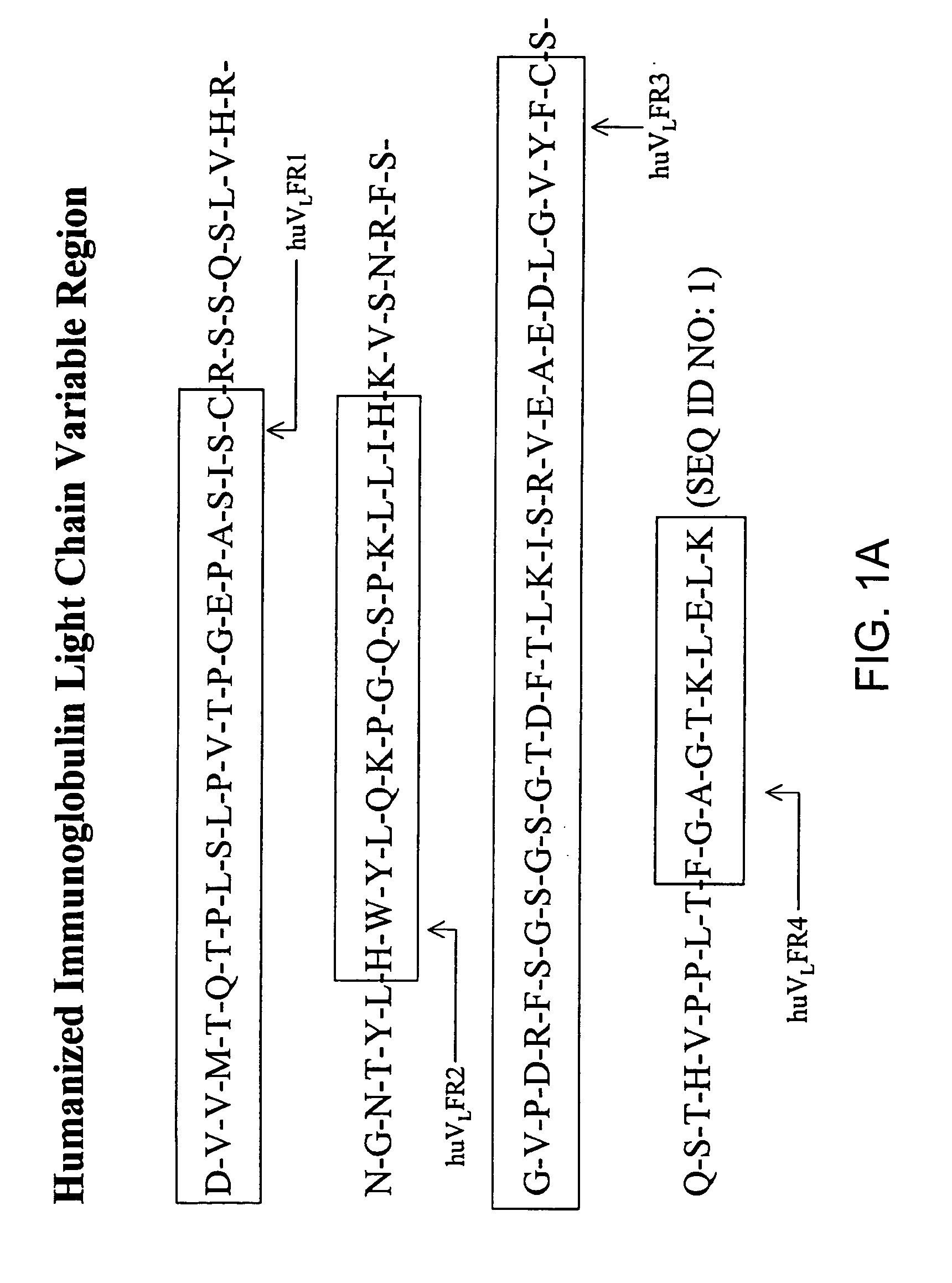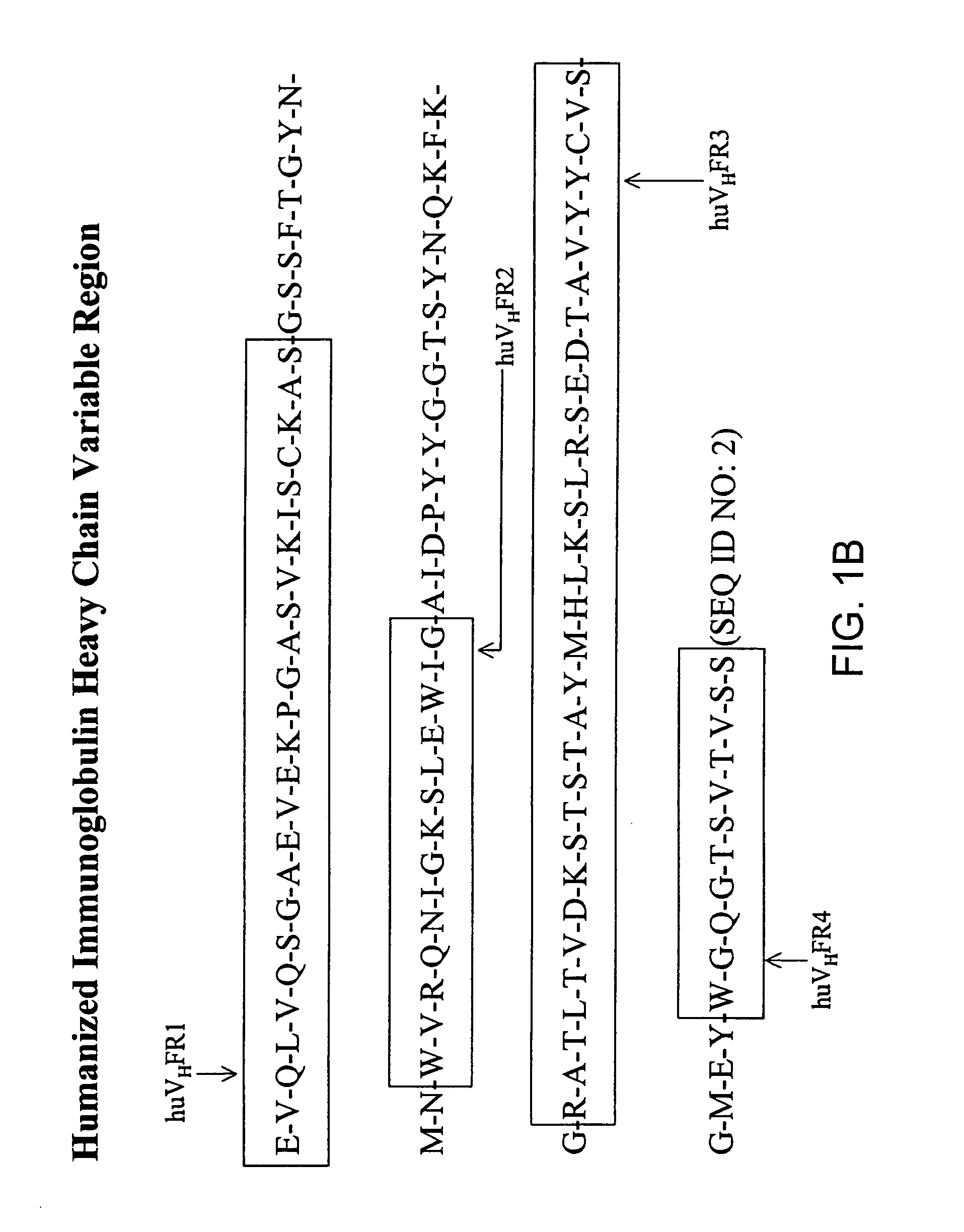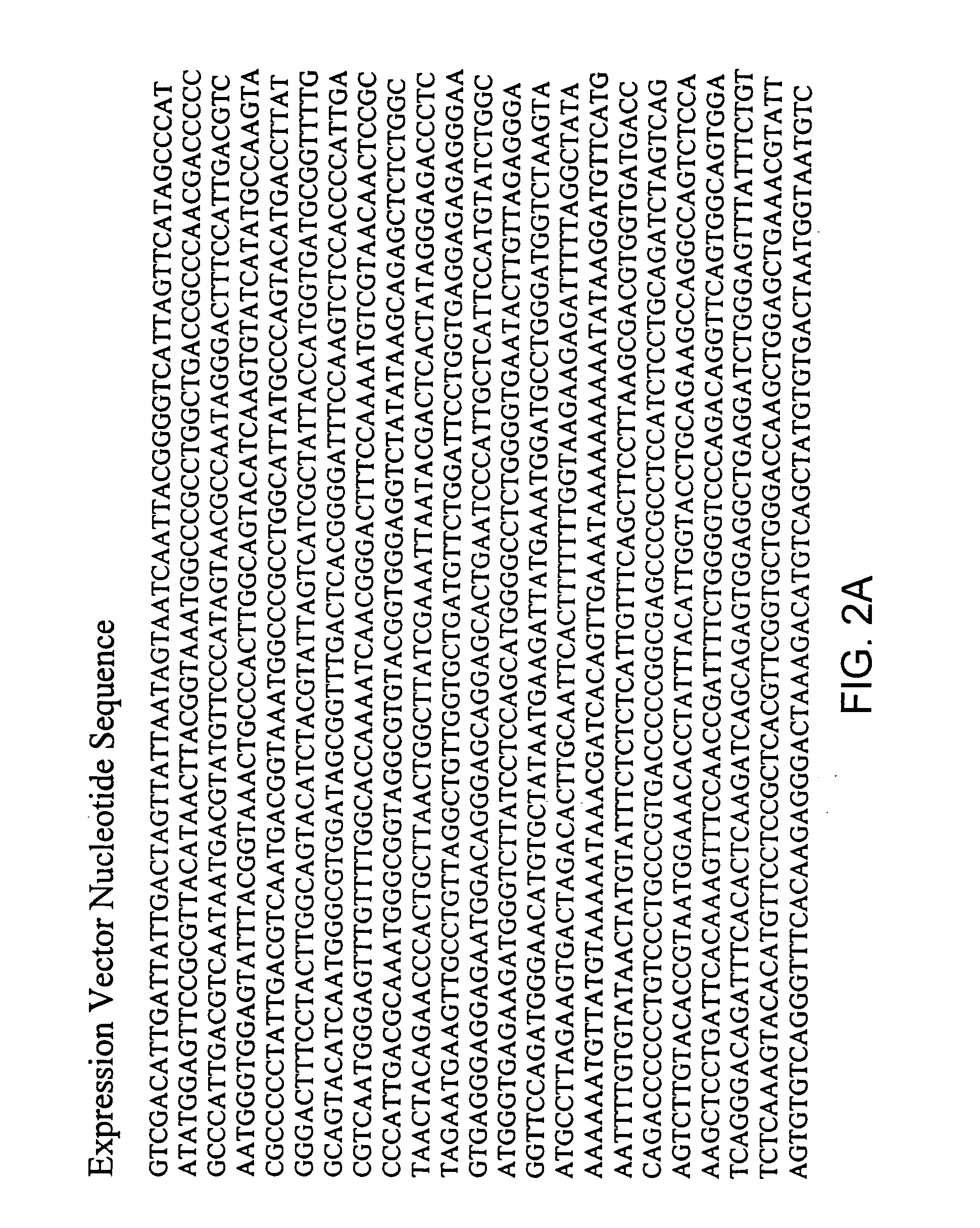Immunocytokine sequences and uses thereof
a technology of immunocytokine and sequence, applied in the field of modified antibodies, can solve the problems of affecting the desired therapeutic effect, affecting the efficacy of an antibody-based therapy, and the effectiveness of antibody-based therapies is often limited, so as to enhance the effect of targeted immune therapy and reduce the immunogenicity of patients
- Summary
- Abstract
- Description
- Claims
- Application Information
AI Technical Summary
Benefits of technology
Problems solved by technology
Method used
Image
Examples
example 1
Purification and Formulation of hu14.18-IL2
[0070] In one study, hu14.18-IL2 was expressed from NS / 0 cells, tissue culture supernatant was harvested, and the hu14.18-IL2 protein was purified using, in sequence, Abx Mixed Resin column chromatography, recombinant Protein A chromatography, and Q Sepharose column chromatography, followed by Pellicon 2 tangential flow diafiltration for buffer exchange into formulation buffer. Details of these purification steps are described below. Virus inactivation and removal steps were interdigitated into these steps as described below. The virus inactivation and removal steps were not necessary for purification per se, but were used to satisfy regulatory considerations.
[0071] Two liters of NS / 0 tissue culture supernatant containing hul 4.18-IL2 was pH-adjusted to 5.9 with 1M acetic acid and was applied to an Abx column (J. T. Baker); washed with 10 mM MES, 100 mM sodium acetate pH 6.2; and eluted with 500 mM sodium acetate pH 7. This material was l...
example 2
Anti-Tumor Activity of the Hu14.18-IL-2 Fusion Protein Observed in Phase I Clinical Trials
[0073] To evaluate the safety and efficacy of hu14.18-IL-2, a Phase I clinical trial was performed. Eligible patients had histologically confirmed melanoma that was considered surgically and medically incurable. These patients could have either measurable or evaluable metastatic disease, or they could have no evidence of disease following surgical resection of either distant metastases or regionally recurrent disease. Patients with multiple (two or more) local or regional recurrences were included only if they had prior evidence of lymph node involvement and if each recurrence was separated in time by at least 2 months. All patients needed to have adequate bone marrow function (defined by total white blood cells (WBC)>3,500 / ml, or total granulocytes>2000 / ml, platelets>100,000 / ml, and hemoglobin>10.0 g / dl), adequate liver function [defined by an aspartate aminotransferase (AST)60 ml / minute). Al...
example 3
Immune Stimulation In Vivo by Hu14.18-IL-2 in a Phase I Clinical Trial
[0079] Patients treated with hu14.18-IL-2 were also examined for indications of immune stimulation. A peripheral blood lymphopenia occurred on days 2-4, and this was followed by a rebound lymphocytosis on days 5-22. Both of these changes were dose-dependent (p21 day), lymphocyte cell surface phenotype was determined on days 15 and 22 in addition to days 1 and 8. This analysis demonstrated that the augmentation of CD56 and CD56 / CD16 co-expressing cells remained significantly elevated (p<0.01) on days 8, 15 and 22.
[0080] As a measure of immune activation, C-reactive protein (CRP) levels for patients 13-33 and soluble IL-2 receptor (sIL-2R) levels for the 31 patients completing course 1, were obtained. A significant increase in mean CRP was present on treatment days 3-5 in both course 1 and course 2 compared to baseline for each course. This increase in CRP returned to baseline levels by day 8 of each treatment cou...
PUM
| Property | Measurement | Unit |
|---|---|---|
| pH | aaaaa | aaaaa |
| glycosphingolipid cell surface expression | aaaaa | aaaaa |
| affinity | aaaaa | aaaaa |
Abstract
Description
Claims
Application Information
 Login to View More
Login to View More - R&D
- Intellectual Property
- Life Sciences
- Materials
- Tech Scout
- Unparalleled Data Quality
- Higher Quality Content
- 60% Fewer Hallucinations
Browse by: Latest US Patents, China's latest patents, Technical Efficacy Thesaurus, Application Domain, Technology Topic, Popular Technical Reports.
© 2025 PatSnap. All rights reserved.Legal|Privacy policy|Modern Slavery Act Transparency Statement|Sitemap|About US| Contact US: help@patsnap.com



